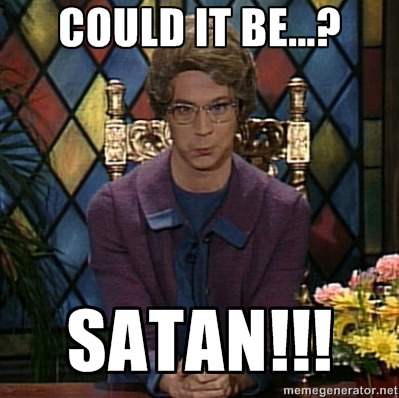Transformation: Actions Speak Louder Than Words

Transformation is an integral part all great stories. The trick, however, is to leave a trail of breadcrumbs to show how a character has either progressed or regressed. Few things can be more disappointing than reading a story where SUDDENLY, POOF! The MC has some grand epiphany at the end how they really needed to change in order to win.
This is the stuff of cartoons not grand fiction.
Last week, I offered some tips for creating dimensional protagonists. When we are new writers, especially, we tend to be shy. We want our main character (MC) to be good-looking, smart, make all the right decisions…and be able to sing while birds wrap ribbons in her hair.
Okay, maybe we aren’t THAT bad, but pretty close. At least I was.
When I wrote my first ‘novel’ my MC was everything I wanted to be and more! Why? Because, aside from being absurdly insecure, I had zero clue how to write a novel. I was playing what I now call ‘Literary Barbies.’
There were lots of ‘scenes’ and ‘adventures’ and my MC could do everything I never could do. Making her ‘rough around the edges’ felt like showing the world my dirty laundry.
Thus, the first thing we need to learn when we want to write a REAL novel is that, though our characters—even our protagonist—can’t help but have elements OF us? They are NOT US.
We have to put in that psychic distance because, for transformation to occur, we need to roughen them up to make them super interesting.
Transformation for Everyone

I’ve been blogging since 2007 and the world has changed a lot. One massive change has been how we view media. I’ve generally used a lot of movie examples along with books. Why? Namely, because it was easier and quicker to make a point.
Yet, modern audiences prefer to, “Netflix and chill.” In ways, this is a good thing because series, in my POV, are more reflective of novels. I believe the depth series offer has spoiled us.
Movies simply can’t offer us the intimacy we crave.
This said…
It takes an average of 12-15 hours to read a full novel. A full television series is about 12-15 episodes at an hour per episode. One of the reasons I believe audiences prefer not only television series, but book series, is because they offer so much more DEPTH.
We get to witness transformation in everyone. In a well-written novel, the transformation process should be ugly, painful, and prolonged. This is a large part of what keeps us hooked into the story. We should be able to see the MC gradually evolve over time, and it shouldn’t be a nice, clean arc because nothing in life is nice and clean!
In particularly good novels, series, movies, television series, everyone undergoes transformation. Or, as the late, great screenwriter Blake Snyder said, “Everybody arcs!”
If I think of my favorite series Stranger Things, Battlestar Galactica, Game of Thrones, The Last Kingdom, to name a few, the tug-of war in each of the characters is a major part of what kept me riveted.
One episode I’d hate one character only to be rooting for them the next, then back hating them three episodes later and AHHHHH!
Same with books and especially series. Ken Follet’s Pillars of the Earth, Robert R. McCammon’s The Matthew Corbett Series, Carole Lawrence’s Ian Hamilton Series, Will Thomas’s The Barker & Llewellyn Series, Robert Galbraith’s mystery thrillers, and Frank Herbert’s Dune are among my favorites.
Since everyone arcs, this means the antagonist should also experience transformation, though their arc will lead in the opposite direction of the MC’s.
Genre will dictate how this crossing of arcs plays out.
Power Shift

In a genre where the antagonist is a villain (I.e. thriller, mystery, suspense), if the MC were pitted against the villain in the first chapter, he/she would lose…badly.
The story trials are what will create the transformation necessary for the MC to become a hero who is capable of solving the core story problem and defeating the villain.
Conversely, the villain begins the story in a far stronger position. Over time, however, the crucible works against the antagonist. The trials strengthen the villain’s opposition (our MC), weakens/unravels the villain’s plan, dwindles resources, scatters forces, and/or fractures resolve.
This progresses to such a point that, by Act Three, the MC is now a HERO and the villain (while still in a position of superior power) can’t crush the opposition like a bug.
Transformation Ain’t Pretty

Transformation sounds like such a pretty word, doesn’t it? Yet, if we think about it realistically, it’s a rather ugly process.
Imagine a caterpillar becoming a butterfly. Once in the cocoon, if we slit open the chrysalis we’d a) witness a half-formed pile of goo b) stop the transformation process c) kill the creature.
The same can be said of our MC. Once the MC agrees to the journey, they’re effectively entering a chrysalis. Until the butterfly (hero) emerges in Act Three, our MC is an unformed pile of goo with promise. Interrupt this process and we kill the story and effectively stop a hero from ever coming into being.
The Tug-of-War of Transformation
All right, so I’ve used this transformation word a lot thus far, but HOW do we pull this off? Not only to make it believable, but to make it interesting and generate that nerve-shredding tension that keeps audiences riveted?
Today, we’ll focus on the MC for brevity’s sake. In my post on ways to create dimensional protagonists, I mentioned three key ingredients.
Weaknesses/FlawsWoundsBlindspots
There’s a fourth factor we can add in today…SECRETS. To quote the great Dr. House, ‘Everybody Lies.’ Put a pin in this 



